How to grow garden hibiscus in the middle lane
Hibiscus is a tree, shrub or herb from the Malvaceae family. There are about 200 varieties of it, and therefore growing garden hibiscus is a very exciting experience for flower growers all over the world. One of the species (Sudanese rose) is used to make Karkade tea. Okra, okra - edible hibiscus, its cultivation is possible in the garden or on the balcony. Popular indoor flower - chinese hibiscus - grows outdoors in countries with warm climates. In our latitudes, it is only suitable for container gardening: flowers are taken outside in summer and brought back when it gets colder. At home, tree-like hibiscus, or Syrian, is also grown - a deciduous shrub that has a pronounced dormant period and requires certain wintering conditions.
Hibiscus garden species
Growing garden hibiscus on the site and caring for it is not a hassle, this plant allows you to decorate a shady corner with large, bright flowers. Breeders have developed several varieties that can be planted in central Russia, but they require winter shelter or digging out of the ground. There are frost-resistant species, but they are rarely found on the market.
For regions with a temperate climate, hibiscus are suitable:
- triple,
- Syrian,
- swamp,
- herbaceous,
- garden.
Syrian and garden hibiscus are often confused, because for the first there is another name - tree-like. In southern countries, he received the nickname - "flower of love." Usually it is a shrub about 1.5-2 meters in height, completely covered with large simple or double flowers, similar to mallow. The classic colors are white and lilac, but now others are also bred: pink, red, blue. Swamp hibiscus, or okra, okra, is a very ornamental shrub with large flowers, usually pink or red in color. It is frost-resistant, withstands temperatures down to –30 ° C.
The herbaceous hibiscus grows up to 3 meters tall and is a frost-hardy shrub that blooms from August to September. Its stems are massive, erect, with large leaves that resemble sunflower leaves. Flowers can be white, light pink, or red. Growing and caring for it is very simple. The plant is sun-loving, undemanding to the composition of the soil, therefore it is popular among flower growers. For the winter it is cut to the root, and in the spring it grows back. There are more than 1000 hybrids of herbaceous hibiscus. The trifoliate hibiscus, or northern, is a medicinal herbaceous annual plant with small light yellow flowers that open in the morning for several hours.
Garden hibiscus is a hybrid herbaceous perennial resulting from the crossing of 3 species: red, pink and holly. Differs in decorative foliage and large spectacular flowers, the size of which can reach 40 cm. Care is simple.
There are several hybrids.
- Youth Is a plant with light green leaves and purple tulip-shaped flowers.
- Late - a shrub with oval leaves and crimson flowers in the shape of a bell, grows up to 1 m.
- Pale pink - plant up to 2 meters high, yellowish foliage, bright pink flowers, tulip-like.
- Pink-porcelain - medium-sized bush up to 1.5 m high, flowers are large, pink, with a white throat, in the form of bells. Bright green succulent leaves on long petioles.
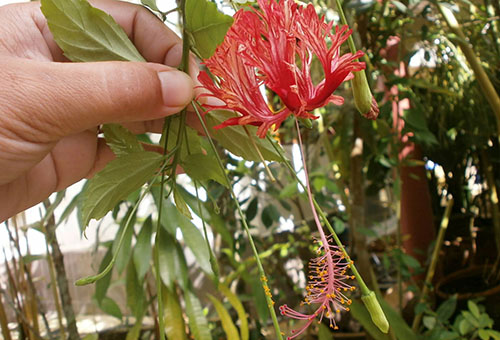
Hibiscus for container gardening
The following species are used as a tub culture on the site.
- Dissected Hibiscus (Schizopetalus) - the petals of flowers of this species are strongly dissected and bent back. Outwardly, it resembles a domesticated Chinese. Flowering lasts from spring to autumn.
- Chinese hibiscus - shrub with flowers of various sizes and shades. Cultivation as a houseplant is common, but it can be taken out into the garden for the summer. Caring for a tub flower consists in abundant watering and feeding.
Growing these plants is not difficult, but there are some rules that must be followed in order for hibiscus to grow healthy and strong.
Garden hibiscus care
Planting is carried out in an area with nutritious and breathable soil, protected from winds and bright sun. A shrub is planted in the spring, then by autumn the young plants will have time to take root. To grow garden hibiscus outdoors, you will need a deep planting hole, which must be filled with a thick layer of drainage - at least 15 cm - with sand and rotted compost. This mixture is laid out with garden soil mixed with sand and peat.
Plants are placed in a hole so that the root collar is level with the soil, it is not necessary to deepen it - this can lead to decay. Then sprinkle with soil and watered abundantly. Planting and leaving before winter should be accompanied by soil mulching. Additionally, it is better to insulate the seedlings with spruce branches.
Further care for hibiscus garden consists in abundant watering, regular loosening of the soil, pruning and feeding. It is necessary to water the shrub as the soil dries out with warm, settled water; on hot days, more liquid will be required. Some types of hibiscus, with a lack of moisture, drop their leaves. It is advisable to feed the shrubs in the spring-summer period with a phosphorus-containing fertilizer once every 2 weeks.
Loosening the soil improves aeration and allows the root system to breathe. It is better to prune garden and tree-like hibiscus in spring or early summer - this has a beneficial effect on flowering, facilitates maintenance and helps to give the tree a beautiful shape. It is important to properly prepare young trees for the dormant period: before the onset of frost, the garden hibiscus is cut and watered abundantly, after which the soil around is mulched using dry foliage and sawdust... Young plants are wrapped or bent to the ground. For shelter, a frame and a special material, such as agrotex, are used.
Pruning hibiscus
Spring care of the plant consists of pruning the branches. This is a necessary procedure for both indoor and garden species. It is produced after a dormant period, when the bush has not yet had time to start growing. Correct shortening of the shoots has a positive effect on flowering, improves the branching and appearance of the shrub.
In some species, flower buds are laid only at the ends of new shoots, therefore, without pruning, the plant may stop blooming. Treelike and garden hibiscus is well formed, you can give it any shape, for example, turning it into a standard tree. Cuttings obtained during pruning are used for plant propagation.
Advice
Do not get rid of the hibiscus rhizome in early spring - these plants wake up late, and it is better to wait a while than uprooting the still living bush.
Propagation of hibiscus by cuttings
Garden and tree-like hibiscus propagates very simply: by seeds, cuttings, grafting. Cuttings begin in the summer, before flowering. For this, shoots with several internodes are cut from the bush, the ends are powdered with a root formation stimulator and planted in a greenhouse with peat soil. Rooting lasts about a month, when the shoots start to grow, they are transplanted into pots with a nutritious substrate and grow there until a bush is formed. After that, it is possible to plant plants in the open field.
Advice
Young plants do not have the frost resistance of adults, therefore they need to be covered for the winter or dug up, transplanted into pots and stored until spring in a cellar or in the dark on a glazed balcony.
The water method is also suitable for cuttings, but when using it, most of the leaves are removed from the shoot, leaving 3-4, large ones are cut by a third to reduce evaporation. A tablet of activated carbon is added to the water so that there is no decay. By cuttings, hibiscus usually reproduces successfully.
How to propagate hibiscus by seed
Growing from seeds is the easiest way to propagate these plants. Garden hibiscus obtained in this way blooms in the year of planting, and Syrian only in the third year. It is better to start sowing in winter, from the end of January. The seeds need fresh, they do not need stratification. Planting is carried out in a mixture of peat and sand, before it, the seed must be soaked in a growth stimulator for a day.
Crops are watered and covered with a bag or placed in a greenhouse, placing it in a bright and warm place, where the temperature is not lower than +25 ° C. Before the emergence of friendly shoots, caring for seedlings consists of regular airing and spraying. Outdoor cultivation begins at the end of May, when the threat of frost has passed. Plants are planted in a permanent place, protected from drafts and the scorching sun.
Diseases and pests
The main pests of hibiscus are spider mites. They multiply rapidly in hot and dry conditions, covering the bush with white cobwebs. Yellow dots appear on the leaves, the buds do not open, but dry up and fall off. In case of severe damage, the plant must be treated with special preparations. There are also folk recipes for getting rid of this pest: spraying with an infusion of garlic, a solution of essential oils (10 drops per 1 liter of water) and others. Bushes are sometimes affected by aphids. These are rather large insects, visible to the naked eye. When they appear, insecticides are used.
Hibiscus can be sick with chlorosis, while the leaf plate turns yellow, only the central veins remain green. The disease most often occurs due to a lack of nutrients, especially iron. It is necessary to add additional organic fertilizers to the soil and spray it on the sheet with iron chelate. The lack of nutrition is also indicated by such signs as the lack of flowering, frequent yellowing and falling of leaves, and poor development of shoots. If the plant is not properly cared for, fungal diseases can occur caused by over-watering or low water temperatures.
So, hibiscus - can be trees, bushes or grasses. They prefer a sunny location, abundant watering and fertilizing with phosphorus fertilizers. In central Russia, some frost-resistant varieties can be grown in open ground, but most species require shelter for the winter with special material or spruce branches.
Perennial shrubs, such as hibiscus garden and arboreal (Syrian), throw off the foliage for the winter, but herbaceous species rarely retain the aboveground part, growing again from the rhizome every spring. Major illnesses are associated with care errors and nutritional deficiencies. Of the pests, mites and aphids are often affected. Plants reproduce well by seeds and cuttings.


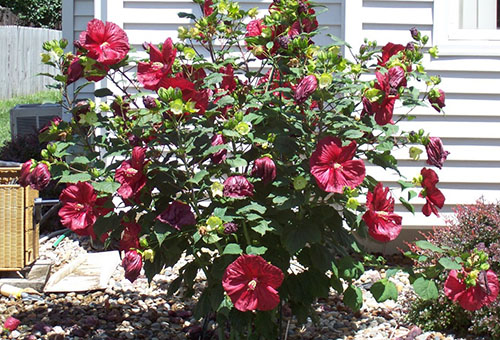
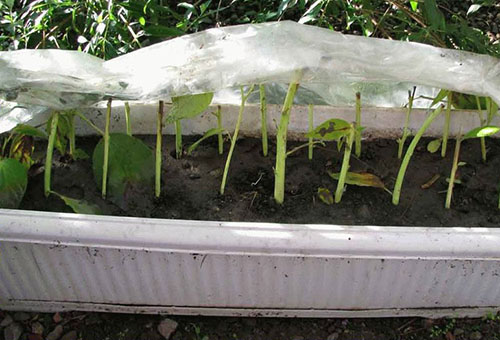
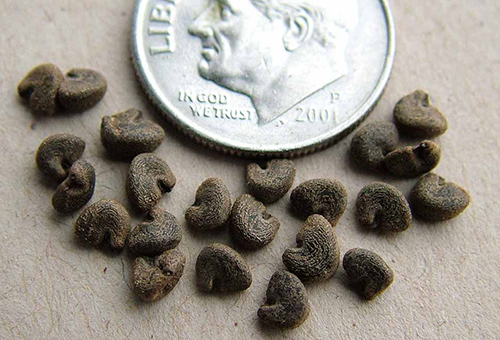
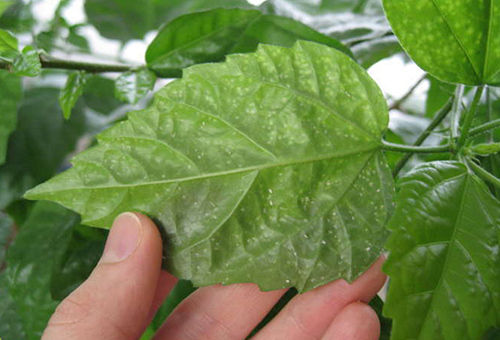
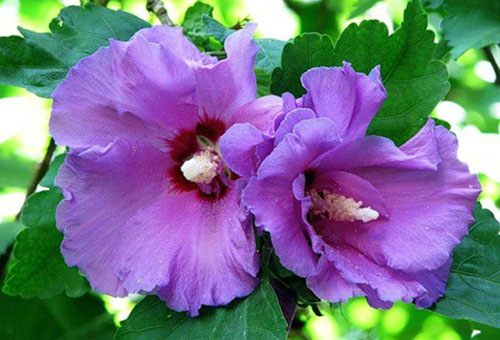
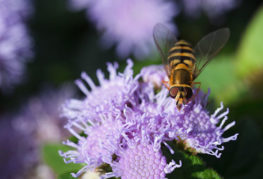

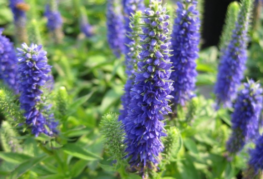
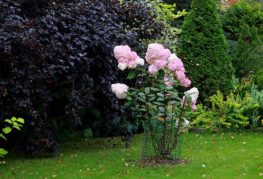
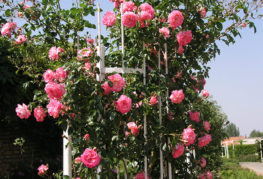
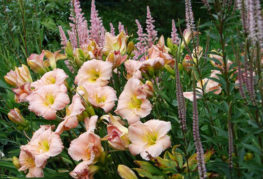
and will be published shortly.